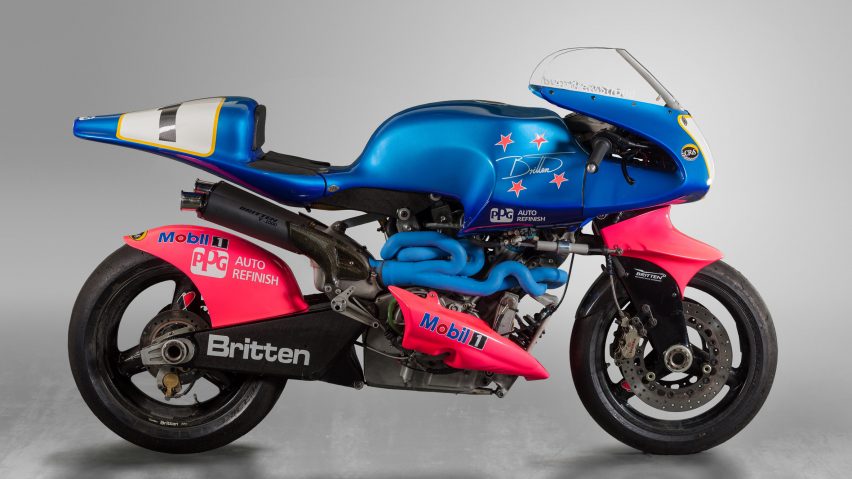
Ultimate Collector Motorcycles authors name seven of the world's most prized motorbikes
The latest book from Charlotte and Peter Fiell showcases 100 of the most collectable motorcycles of all time. The pair have chosen their top seven, which includes a pioneering monocoque by designer John Britten.
Published by Taschen, Ultimate Collector Motorcycles is a double-volume anthology featuring many of the most valuable bikes in existence today, from cherished race winners to pioneering record-breakers.
Each bike is pictured in exquisite detail and accompanied by detailed descriptions of the history and technical features.
This reflects Charlotte Fiell's particular fascination with motorcycle engines. "I have always loved motorbikes from a very young age," she told Dezeen.
"A beautifully put-together engine is a really incredible thing. It's life or death in terms of design and engineering."
The book is the follow-up to Ultimate Collector Cars, also authored by the Fiells. Here, the couple were able to create an even more comprehensive list, spanning an entire century.
While private car collectors were sometimes unwilling to reveal the contents of their collections, the Fiells had no such trouble with motorcycle collectors.
"Without question, the 10 most-valuable motorcycles in the world are in this book," said Peter.
Read on for the authors' selection of the seven most important examples:
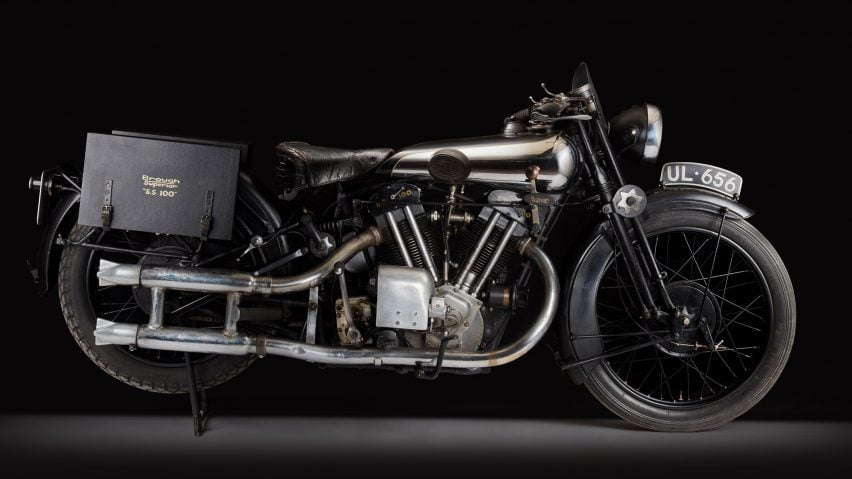
Brough Superior SS100 Alpine Grand Sports
Ex-TE Lawrence, 1929
It was 1924 when Brough Superior introduced its SS100, a bike named after its impressive top speed of 100 miles per hour, which became an important precursor to modern adventure touring bikes.
"It was rightly considered the Rolls Royce of motorcycles," said Peter.
Legendary British army officer and spy, Thomas Edward Lawrence – better known under the moniker Lawrence of Arabia – owned a series of SS100s before his tragic death in a crash in 1935.
This model is one of two that remain intact. Gifted to Lawrence by close friends Charlotte and Bernard Shaw, this spring-framed SS100 Alpine Grand Sports (AGS) is believed to be one of the most valuable motorcycles in the world.
"This is a mythic bike," said Charlotte. "It gives a modern riding experience even though it's basically an antique."
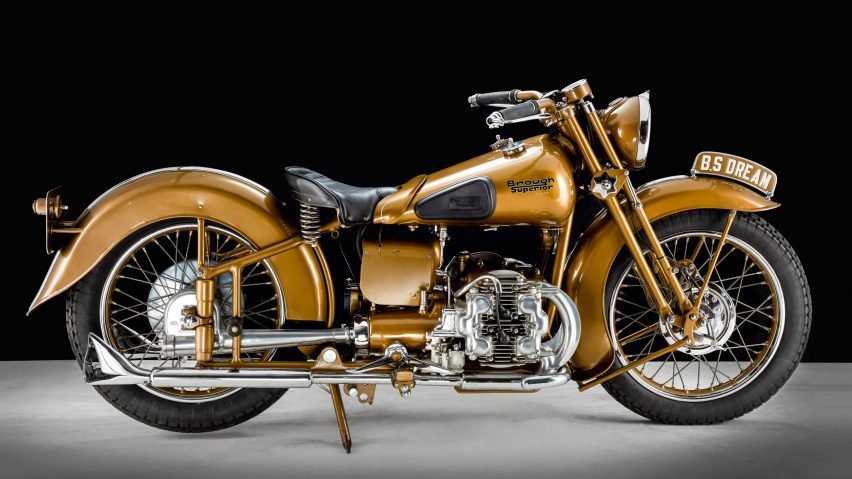
Brough Superior "Golden Dream"
1938
Having made a career out of putting dream bikes into production, former racer George Brough unveiled his vision of the ultimate motorcycle at the 1938 Olympia Motor Cycle Show.
The Dream boasted a bespoke four-cylinder engine with two crankshafts, cleverly engineered to rotate in opposite directions for a supremely smooth ride. "It was years ahead of its time," said Charlotte.
This bike became the star of the show, more so because of its striking gold finish.
"No motorcycle had ever been painted with a metallic finish before," added Charlotte. "It must have been something to witness this stunning, shimmering bike for the first time."
The outbreak of world war two meant the Dream never went into production, despite its popularity; only a handful were ever built. So this gold model, which wasn't actually fitted with a working engine or gearbox, is one of a kind.
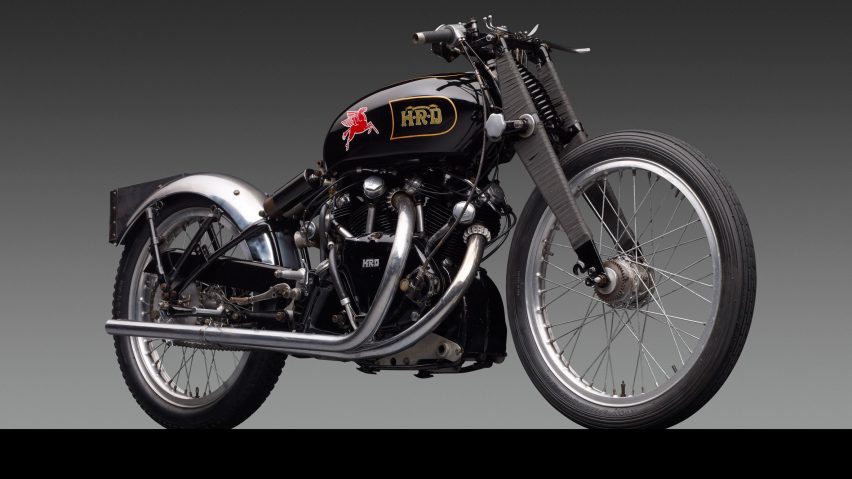
Vincent Black Lightning John Edgar Prototype
Ex-Rollie Free, 1948
The Black Shadow was the fastest road vehicle in the world when it launched in 1948. With a top speed of 125 miles per hour, it could even outpace the fastest production car of that time, the Jaguar XK120.
This particular example is the custom version used by Roland "Rollie" Free when he broke the land speed record.
Later named the Vincent Black Lightning, it had its seat removed so that Free could adopt an unusual lying-down riding position, thought to reduce drag and improve the bike's stability at high speed.
With his leathers coming apart at the seams, Free decided to swap them for a pair of swimming shorts, a latex swimming cap and a pair of tennis shoes. It was in this attire that he broke the record.
"Rowley Free rode this bike in an unbelievably dangerous way," said Peter.
"That led to probably the most iconic motorcycle photograph ever, of him lying flat out prone on top of the motorcycle wearing a bathing suit, doing 150 miles an hour."
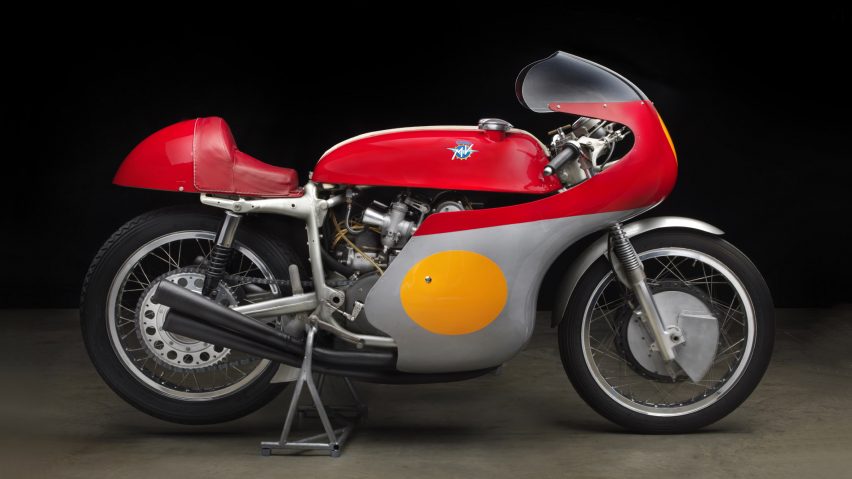
MV Agusta 500 4C Championship-Winning Works Grand Prix Racer
Ex-John Surtees, 1956
Italian motorcycle marque MV Agusta won its first 500 cc World Championship in 1956 with this four-cylinder race bike known as the Corse 500 Quattro Catena, due to its chain-driven transmission.
It was a pivotal moment for the company founded by Count Domenico Agusta, seen by many as the motorcycle world's answer to Enzo Ferrari.
It marked the start of a run of success for championship-winning rider John Surtees, who went on to win "a hat trick of double crowns" on MV's 500/4 between 1958 and 1960, before switching to motor racing for Ferrari.
"John Surtees is the only man in history to have won a World Championship on both two and four wheels," said Peter.
This example, which can be found in the Barber Motorsports Museum in Alabama, was the exact one that Surtees rode in his victory at the 1956 Isle of Man TT Grand Prix.
"This was a revolutionary bike that dominated for around 12 years," said Peter.
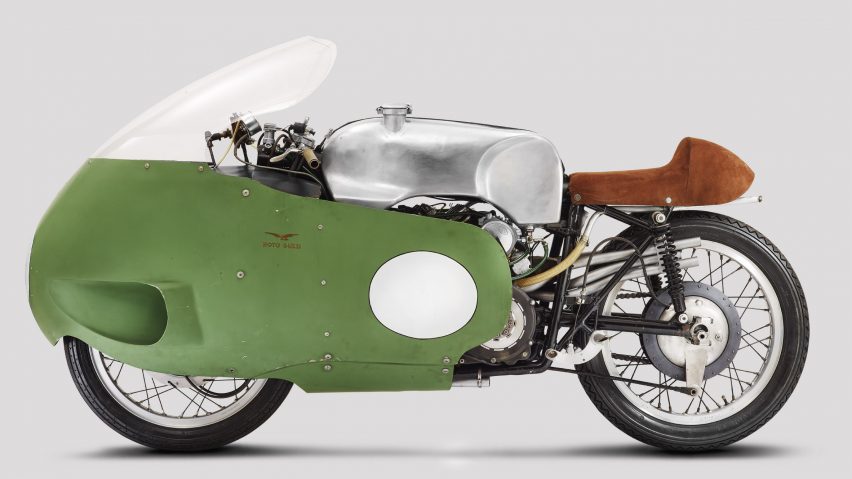
Moto Guzzi 500 cc V8 Works Grand Prix Racer
1957
This race bike is held in high esteem thanks to its extremely high power output, which saw its speed in the 1957 season top out at around 178 miles per hour.
It was 20 years before another bike was able to match this in a Grand Prix.
Key to the design was a water-cooled V8 engine with an innovative space-saving design, so compact it could fit under a dustbin fairing. This resulted in optimal aerodynamics, yet the entire engine weighed just 56 kilograms.
"No one had thought it was actually possible to make such an engine," said Charlotte.
Unfortunately, tyre and braking technology were not able to match the V8's ambition, resulting in numerous crashes.
As a result, the bike was withdrawn after two seasons. This model is one of only two still known to be in existence.
"It represented the apotheosis of 1950s design innovation when it came to motorcycles," said Charlotte, "but the engine design was just too far ahead of its time."

Ducati 750 Imola Works Racer
Ex-Paul Smart, 1972
This 750 Imola racer marked a defining moment in the history of Italian motorcycle marque Ducati.
When British rider Paul Smart rode it to victory in the inaugural Imola 200 race in 1972, it cemented Ducati's reputation as a pioneer of the new generation of large-capacity motorcycles.
This was the first time that Europe had hosted a Formula 750, a 200-mile endurance race specifically for production-derived bikes.
"All the big manufacturers jumped on board because they knew it would lead to sales," explained Peter.
"You could buy virtually the same bike that just won the race. So what wins on Sunday, sells on Monday."
Smart's win paved the way for Ducati's iconic 750 SS production bike, making the 750 Imola arguably the most famous and important Ducati racer of all time.
"You could make a case for the 750 SS being the most desirable bike of all time. And this is the daddy of them all," said Peter.
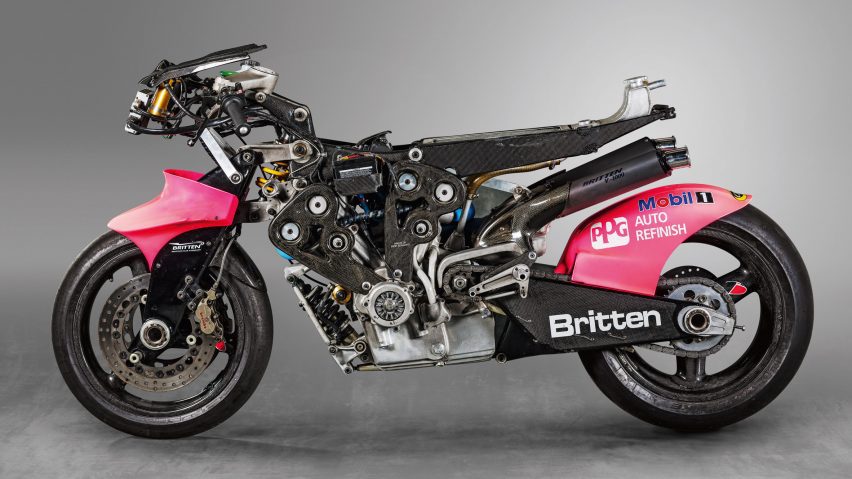
Britten V1000 Superbike Works Racer
Ex-Andrew Stroud, 1991
New Zealand-born designer John Britten made history when he and a small team built a series of ground-breaking racers in what was effectively a backyard shed.
Britten's team developed a monocoque design with bodywork made primarily from carbon fibre and Kevlar – materials that were completely radical at the time, even in Formula One.
"The story is so romantic," said Peter. "This bike predates even Formula One technology, and it was just a lone guy with a team of friends, no computer modelling facilities of any kind, and no engineering department behind them."
This particular example is one of the first three factory racers that Britten's workshop built. The second in the series, this V1000 racer was ridden by Andrew Stroud when he won the inaugural World BEARS in 1995.
Its distinctive colourway, in metallic blue and magenta, adds to its appeal.
"In 1991, it was like the future being pulled into the present," said Charlotte. "Not only did it look the business, but it actually blew everyone out of the water on the track."